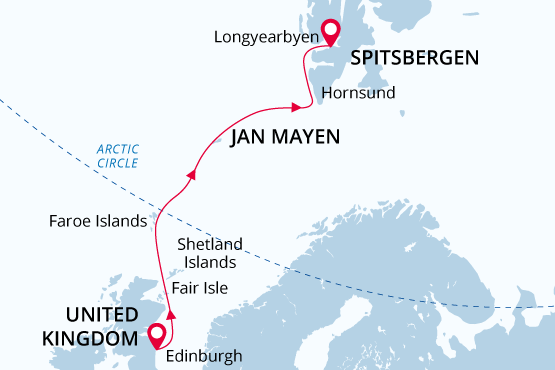
British Isles, Jan Mayen & Svalbard
From the Highlands to the High Arctic
10% discount
Sorry, the date of the cruise has expired. Please see the next date in our brochure.
12 days

| Dates | days | Activities | Special Offers | Rates from | |
|---|---|---|---|---|---|
|
Crossing the Arctic Circle 29 May - 10 Jun 2024 |
13 |

|
Last Minute Deal |
US$ 6 895
US$ 4 482 per person |
Request a quote |
|
Crossing the Arctic Circle 27 May - 8 Jun 2025 |
13 |

|
SUPER EARLY BIRD SAVINGS |
US$ 6 795
US$ 5 776 per person |
Request a quote |
Itinerary
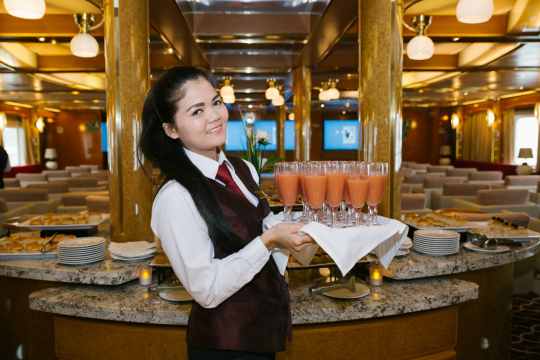
Welcome to Edinburgh, the capital of Scotland and starting point of our expedition. The famous Castle rising above the city gives immediate evidence of Edinburgh’s rich history. While the Town area boasts medieval architecture, the New Town accommodates newer 18th century buildings. Each corner of Edinburgh’s old streets opens beautiful unexpected vistas of green hills or a blue flash of distant sea.
In the afternoon, we welcome you aboard the luxury expedition ship M/V Sea Spirit. Explore the ship and get comfortable in your home away from home for the extraordinary adventure to come.
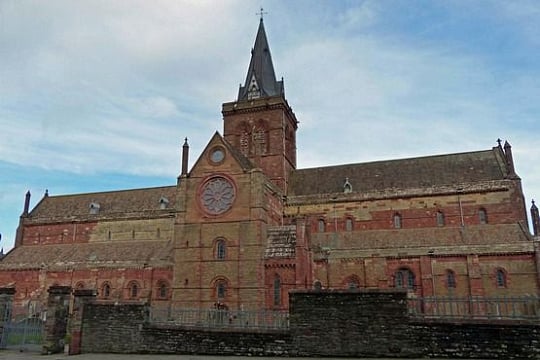
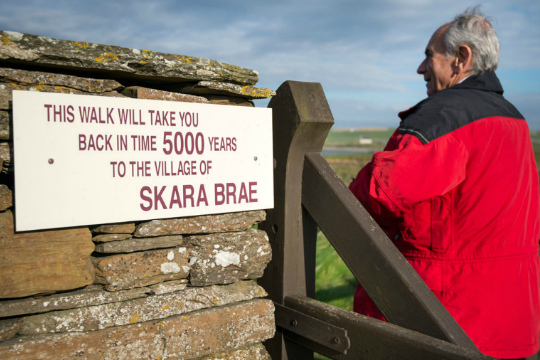
Kirkwall is a small, quiet town, with a gentle pace of life. The town is the capital of the remote and amazing Orkney archipelago. Kirkwall is first mentioned in Orkneyinga saga in 1046. Such a long history has left a rich heritage that we explore today. The most famous are the sandstone St Magnus Cathedral, considered the finest medieval building in the north of Scotland, the Bishop’s Palace and the Earl’s Palace.
Included tour “Ancient treasures of Orkney with St Magnus Cathedral.” Depart Kirkwall and head into the west of Mainland, Orkney’s largest island. This tour passes through the gentle rolling landscape of Orkney and into the Neolithic Heartland of Orkney; an area designated as a World Heritage Site due to its wealth of pre-historic archaeology. Passing the Standing Stones of Stenness, we will stop at the Ring of Brodgar; a huge ceremonial circle of stones dating back almost 5000 years. We then continue on to the 5000-year-old village of Skara Brae, beautifully interpreted in the visitor centre. See the remarkable dwellings revealed from beneath the sand dunes by storms only 150 years ago.
Hear some of the stories from your guide today en route back to Kirkwall. Once back in the island capital we will take a tour of St Magnus Cathedral, built by the Vikings during their 500 year reign over the islands.
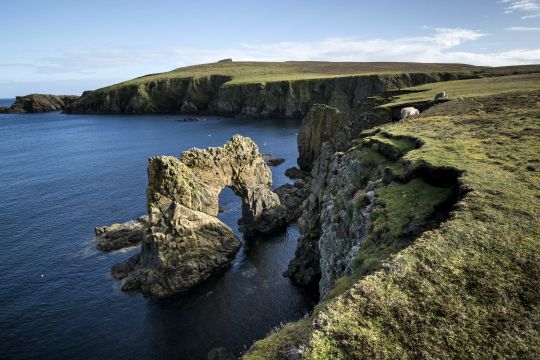
Fair Isle is a real paradise for birdwatchers. Huge number of birds inhabits the lush grasslands and spectacular cliffs. Over 345 species have been recorded here – more than anywhere else in Britain. During our walk across the island, we hope to see northern fulmars, kittiwakes, northern gannets, puffins, and great and arctic skuas.
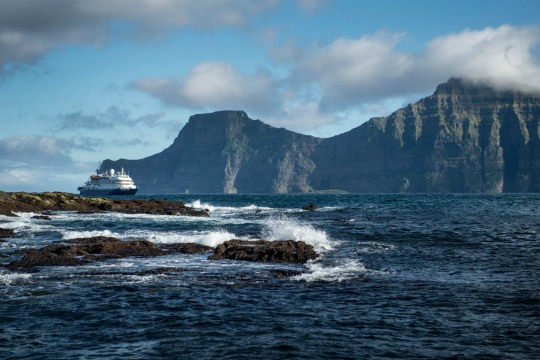
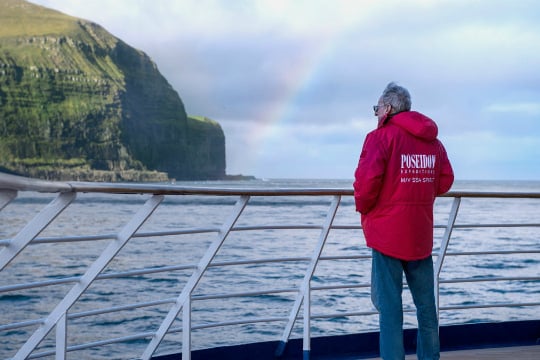
National Geographic Traveler had designated Faroe Islands as “authentic, unspoiled and likely to remain so”. It seems that the Nature spares no colours in “painting” the islands. Deep-green hills, bright blue sea, colourful houses and boats, orange-red puffins’ beaks make the sceneries unforgettable. We stop at the capital of the Faroes —Torshavn.
Included tour “Kirkjubøur.” During the Middle Ages, Kirkjubøur was the ecclesiastical and cultural centre of the Faroes. Here was the Bishop’s residence until the Reformation, when the Faroese diocese was abolished. The imposing ruin of Saint Magnus Cathedral still dominates the site. Construction of the Cathedral is thought to have begun in the late-thirteenth century, as the style of the building is from the best period of Gothic architecture, common to West Norwegian church building of that time. Tradition has it that it was never finished; yet recent research has revealed that it was probably roofed at one time. The Roykstovan, standing on the wide, stone foundation of a portion of the Bishop’s palace, has been the home of the farmers in Kirkjubøur for centuries and occupied by the same Faroese family for 17 generations. Covered with a traditional turf roof, it is a large building made of logs, which are said to have come drifting all the way from Norway some 700 years ago. The farmhouse interior reflects the lifestyle of a large Faroese farm. On our way to and from Kirkjubøur, we have a magnificent view to the west of the islands of Koltur, Hestur, Sandoy, and Vágar.
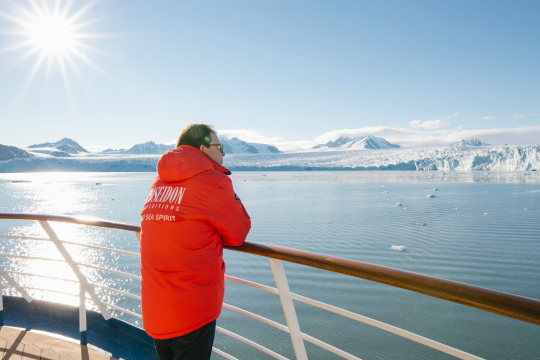
Presentations and workshops by our expert staff, as well as our range of onboard recreation facilities, ensure that this day at sea is not idly spent. Seabird viewing and whale sightings can be enjoyed from panoramic open decks as well as exterior stateroom windows and balconies.
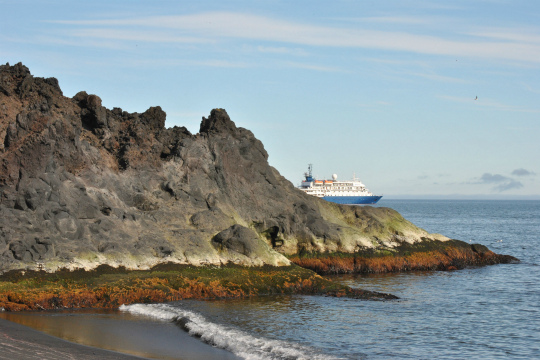
Jan Mayen hosts the landscapes of breathtaking beauty and northernmost subaerial active volcano on the planet – the Beerenberg. The island is wild and uninhabited not including members of Norwegian weather station. The signboard at the entrance door says (translated from the Norwegian): “Theory is when you understand everything but nothing works. Practice is when everything works but nobody understands why. On this station, we combine theory and practice in a way that nothing works and nobody understands why”. Northern fulmars, Kittiwakes, and Brünich’s guillemots breeding on steep cliffs and slopes represent the birdlife of Jan Mayen.
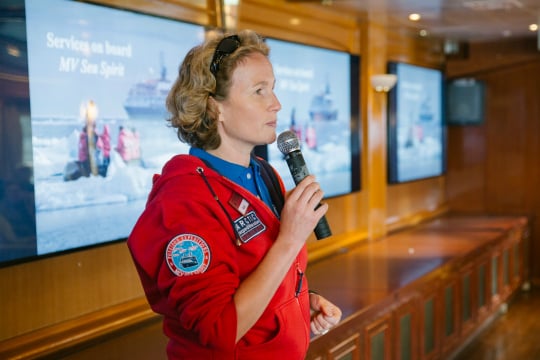
The lectures of our invited speakers prepare us for meeting with the unique Arctic wildlife and awesome landscapes of Spitsbergen.
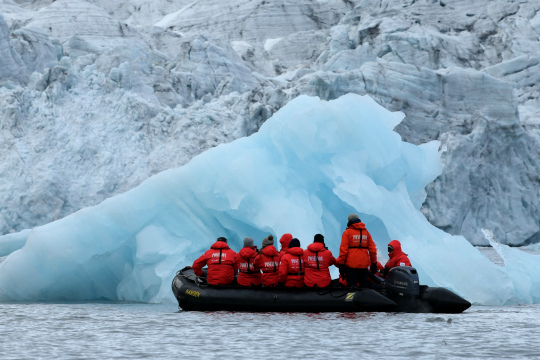
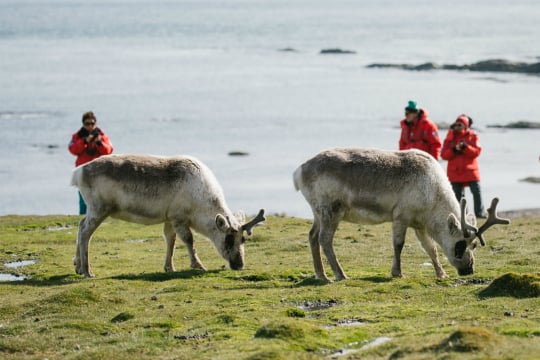
This is a real expedition in a true High Arctic wilderness. As such, our route and exploration opportunities here are heavily dependent on the weather and sea ice conditions we encounter. Our experienced captain and expedition leader decide the itinerary and continually adjust plans as conditions and opportunities warrant. You can be sure that the best possible advantage will be taken of the circumstances presented to us by Nature in this wild and remote corner of the Arctic.
Polar bears and other quintessential Arctic wildlife can be spotted anytime, anywhere in and around Svalbard. We exploit every opportunity to experience excellent wildlife viewing, to discover incredible scenery, and to walk in the footsteps of the historic polar expeditions that came before us.
We anticipate exploring the spectacular fjords, coasts, and islands in the western part of Svalbard. This area contains the archipelago’s most impressive scenery and some of the Arctic’s best wildlife viewing opportunities. Deep fjords and narrow channels are flanked by jagged snowy mountain peaks. Immense tidewater glaciers calve icebergs into turquoise waters. Fields of flowering tundra are home to grazing reindeer and playful Arctic fox. Bountiful inshore and offshore waters are home to walrus and a wide variety of whales. The whole area is alive with migratory birds, including numerous rare species, taking advantage of summer’s fecundity in 24-hour daylight.
To complete the Arctic experience we also explore places rich with history. Our area of exploration contains the historical remnants of whaling camps, coal mining operations, trappers’ cabins, staging areas for historic attempts to discover the North Pole, and even an abandoned polar research station.
The days are filled with memorable excursions, sumptuous meals, presentations by our experts, and enough stunning scenery and wildlife to fill your camera and overwhelm your emotions.
.jpg)
After breakfast we say farewell in the town of Longyearbyen, the administrative capital of the Norwegian territory of Svalbard. We provide a transfer to the airport or to the town center if you wish to spend more time here. In this case, be sure to see the excellent Svalbard Museum and take advantage of quality shopping and dining opportunities in this fascinating Arctic settlement.
Itinerary, landings and all other activities during the cruise depend strongly on ice and weather conditions and are subject to the decisions of the Expedition Leader and the Captain of the vessel. Encounters with any mentioned wildlife cannot be guaranteed.
Rates Include:
- Group transfer to the ship on day of embarkation;
- Shipboard accommodation;
- All meals on board throughout the voyage;
- Tea and coffee station 24 hours daily;
- All scheduled landings/excursions (subject to weather and ice conditions);
- Leadership throughout the voyage by our experienced Expedition Leader & Expedition Team;
- Branded Poseidon Expeditions parka;
- Rubber boots for shore landings for the time of the cruise;
- Welcome and Farewell cocktails;
- All port fees;
- Group transfer to airport or central location upon disembarkation;
- Pre-departure materials;
- Digital Voyage Log;
Rates Do Not Include:
- Airfare;
- Visa and passport fees (if applicable);
- Luggage and trip cancellation insurance;
- Soft drinks and alcoholic beverages other than those for special events and celebrations;
- Personal expenses such as laundry and telecommunication charges;
- Emergency Evacuation Insurance to a minimum benefit of USD 150,000;
- Staff gratuities.
Expedition Leader
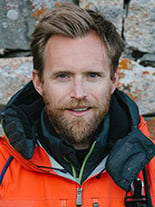
DR. HUW LEWIS-JONES
Huw is a historian of exploration, culture, photography and the environment, with a PhD from the University of Cambridge. He is the author of award-winning books but is happiest when out in wild nature. Huw was Curator at the Scott Polar Research Institute and the National Maritime Museum in London. His books include In Search of the South Pole, The Crossing of Antarctica, Ocean Portraits, The Conquest of Everest, winner of the History Award at the Banff Mountain Festival, Across the Arctic Ocean, and Explorers’ Sketchbooks, an art history of discovery and adventure. His books now have been published in 14 languages.
As an experienced polar guide, over the last decade Huw has wandered on both sides of Antarctica and in the Arctic, from the Ross Sea and the Southern Ocean, to Siberia, Greenland and the North Pole. His research interests are equally wide-ranging, from Admiral Nelson and Captain Cook, through whaling and Heroic Age expeditions, to pioneering photography and even Inuit Art. Back in Britain, Huw regularly appears on television and radio as a historian and cultural commentator, in the BBC documentaries Wilderness Explored, Of Ice and Men, Antarctica’s Forgotten Hero, Battle for the Himalayas, and most recently the PBS Nova special Franklin’s Lost Ships.
Special guests

Rick Sammon
Award-winning photographer
Rick started his professional photography career as an underwater photographer. He easily transitioned into travel, landscape, wildlife, cultural and nature photography. Rick’s images, from his travels to more than 100 countries, have been published in numerous newspapers and magazines, and have been featured in his 39 books. Rick will provide a photo workshop and be available for tips and advice – all with the objective of helping you capture the mood and feeling of the expedition. His wife Susan will also offer instructions on better smart phone photography.
Rick also teaches image processing on the ship, helping transform snapshots into great, memorable shots. In recognition of his talent and influence, Rick has been named a Canon Explorer of Light. Rick is also a Westcott Top Pro Elite. You might also catch Rick at the piano or with his guitar in the lounge!
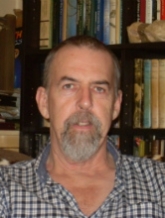
Douglas Richardson
Member of the European Zoo Association, Advisor to the conservation charity Polar Bears International
Douglas, born Scotsman and living in Kingussie, has been working in zoos and on various conservation projects around the world for over 40 years. Currently he consults on a range of international programmes from the European Zoo Association’s polar bear breeding programme to a leopard reintroduction project in Saudi Arabia. For 10 years up until November 2018, he managed the animal department at the Royal Zoological Society of Scotland's Highland Wildlife Park, which specialises in cold weather adapted species. At the park he created a new husbandry dynamic for polar bears which is now being copied in a range of institutions internationally.
As a key member of the European Zoo Association’s polar bear species committee and one of the programme's husbandry advisors, he is concerned with not only how best to keep this complex species, but also looking at the long term linkages between the zoo and the field conservation communities and how we can appropriately manage the captive population so that it is in a position to help the species in the wild in the future. He is also an advisor to the conservation charity Polar Bears International.
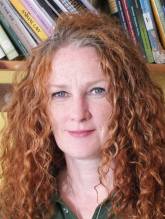
Una Richardson
Zoology, Environmental Science
Una was born in the UK and lives in Kingussie. Amongst a range of other threatened carnivores, as the head keeper, Una is also responsible for the day to day care of the four polar bears at the Royal Zoological Society of Scotland’s Highland Wildlife Park, which includes the first cub born in the UK for 25 years. She has been working in zoos on three continents for over 25 years and although now primarily recognised for her experience with carnivores, her original specialty was primates, with a specific focus on the smaller South American species.
Una’s ursine experience also goes to the other end of the species’ spectrum as she took a year out in 2016 to train staff and advise at the Free the Bears Laos facility which rescues and rehabilitates “pet” and bile farm Asiatic black bears. Una still acts as a specialist advisor to the charity and has been back out to assist with particular bears and help facilitate the move to a new and larger centre in Laos.
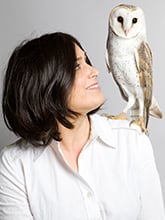
Leila Jeffreys
Ornithologist
Leila Jeffreys’ work is inspired by nature. She began documenting Australian birds by way of photographic portraiture in 2008 when she realized that because of their small size the beauty in commonplace birdlife was being missed. With each work, Leila immerses herself into the bird world and uses classical portraiture artistry to show the viewer a disparate and entrancing world.
Working with conservationists, ornithologists and bird sanctuaries, Leila is able to separate these wonderful creatures from their natural surroundings and photograph them with a high degree of technical skill.
Since her first solo exhibition in 2010 at the Iain Dawson Gallery, Leila has amassed a body of work that has seen her take her place among Australia’s leading photographic artists. Her most recent exhibition at Purdy Hicks in mid-2018 saw record attendances at the gallery and her work has been profiled in notable media such as the Financial Times, The Times, The Guardian and Monocle radio.
Leila has published a hardcover book of her works, Birdland through Hatchette in Australia & New Zealand and Bird Love through Abrams Books in North America and the United Kingdom. An upcoming highlight is the forthcoming documentary A Rare Bird: the Art of Leila Jeffreys.
Photo: Bo Wong
Adventure options
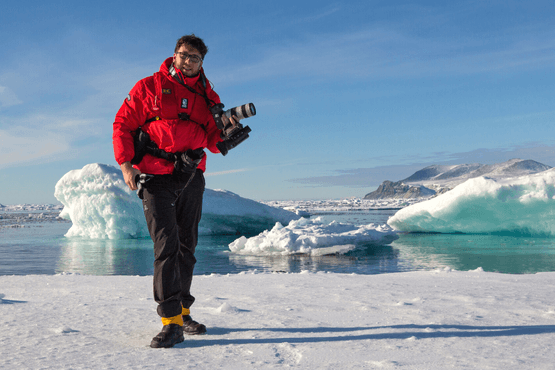
Free option
The Polar Regions are perhaps the most photogenic on earth, with countless beautiful scenes presenting themselves every day. Endless expanses of ice, beaches crowded with seals or penguins, sunsets over unbroken horizons, starlit skies, and even the majestic northern lights – they all present fantastic photographic opportunities – and in order to make sure that you come home with some spectacular images we offer you the chance to learn and practice your photography alongside an experienced professional.
Our expert Photographer will be on hand to answer your questions and give advice, both in the form of on-board lectures and workshops on shore. Explore the key elements of photography in a fun and relaxed setting, with plenty of opportunities for questions and feedback. Learn how to see light in a new way and experiment with the techniques of composition and framing.
request a quote
Cabin:
Date:
Duration:
Articles

Arctic Whaling: A Historic Synopsis
Commercial Whaling in the Arctic is reported to have begun in the 1730’s, as Dutch and English explorers...
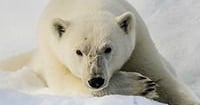
Growing threat for polar bears
Polar bears are, at least in their image in the popular imagination, among the cutest, cuddliest...
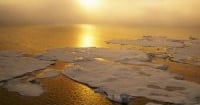
Global warming: for good or ill
The concept of global warming, or climate change, has become a point of contention among scientists,...

Did you know that…?
The area of the Arctic is almost 3 times the size of Europe and is about 27 million km². For a long...
